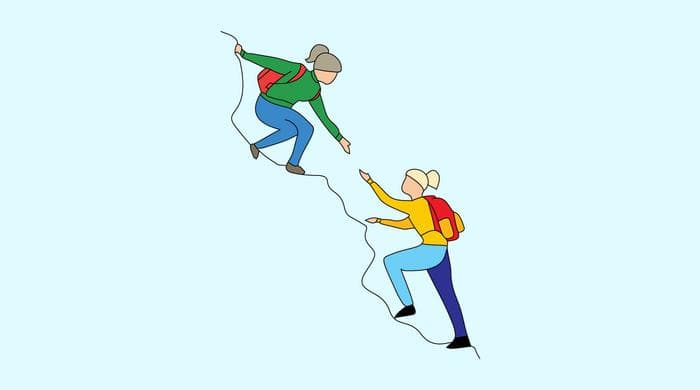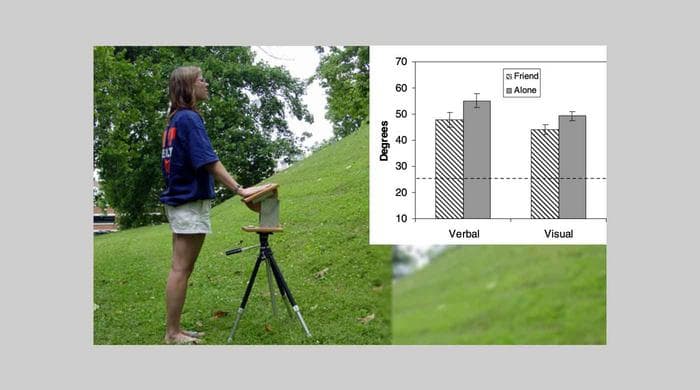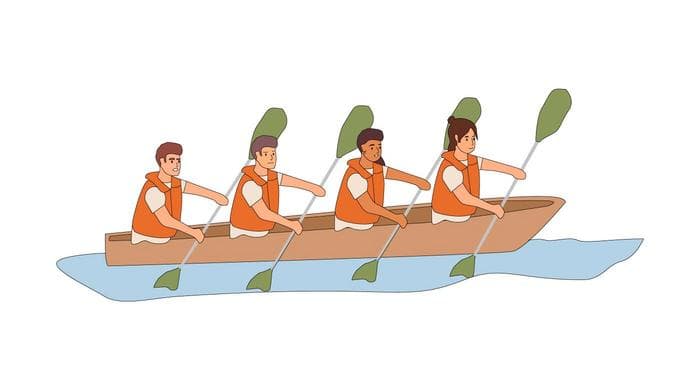Collaborative practices are more effective than individual ones

We often exaggerate complexity of the future tasks.
In one study, participants overestimated hill slant by two times when standing in front of it.1 Climbing hill seemed difficult, so they overestimated its steepness.
However, the hill appeared less steep to those who were with a friend.
Why?
Subconsciously, we believe that climbing a hill together is easier because our friend will share part of the problems.

Engage friends in activities
Scientists called friends as a psychosocial resource. When we lack our own resources, we borrow social and emotional support, belief, optimism, self-esteem, and more from them. It helps us to move forward.
those deprived of such resources will live in a world where hills are steeper, distances greater, precipices deeper, and other kinds of physical challenges more daunting and demanding
Pets are also considered friends. Their presence makes us less perceptive to stress when performing a stressful task. So, take a dog for a workout can be a good idea.
Imagine friends nearby
The hill experiment revealed another interesting finding: when we imagine having a friend with us, the slope of the hill also appears less steep.
Build trusting relationships
Solve hard tasks together and share painful moments. Expressing concerns or asking for help is okay. Openness is the cornerstone of effective collaboration.
Be part of community
It will be easier for you to see that not only you, but also others find workouts challenging.
When people come together, for example, rowers in boat during race, their brains produce more endorphins - natural painkillers. Their pain threshold elevates by 2 times compared to a lone sportsman.2

Teamwork is also more effective. For example, in one experiment, disadvantaged students were taught to work together while studying mathematics, and they soon caught up to the knowledge level of their classmates. On the other hand, those who studied alone were more likely to give up.3
Look for online communities
Internet connects us with people all over the world. Take knowledge and help from them. Visualize as if they are nearby. Imagine what they would do.
Build your own team support through a blog, channel, or podcast. Appreciate the openness and contributions of each person.
Openness. Embrace different perspectives. They provide a fresh look on the situation.
Inclusivity. Encourage everyone to contribute ideas. Allow everyone to speak freely, without fear of judgment, and feel valued. Any ideas can eventually turn into solutions.
-
Schnall, S., Harber, K. D., Stefanucci, J. K., & Proffitt, D. R. (2008). Social Support and the Perception of Geographical Slant. Journal of experimental social psychology, 44(5), 1246–1255. https://doi.org/10.1016/j.jesp.2008.04.011 ↩
-
Cohen, E. E., Ejsmond-Frey, R., Knight, N., & Dunbar, R. I. (2010). Rowers’ high: behavioural synchrony is correlated with elevated pain thresholds. Biology letters, 6(1), 106–108. https://doi.org/10.1098/rsbl.2009.0670 ↩
-
Limitless Mind: Learn, Lead, and Live Without Barriers, Chapter 6, Jo Boaler, HarperOne, 2019 ↩
Posted on
Last edited on
